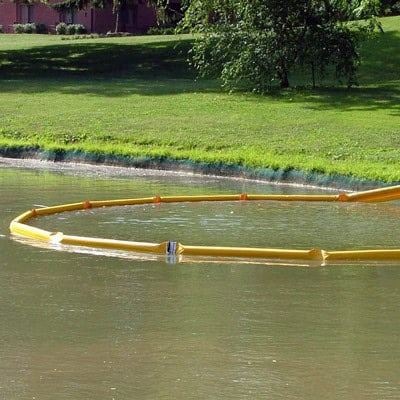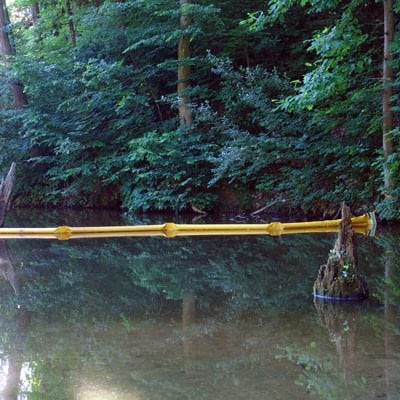Selecting the right water containment boom is crucial for effectively managing and mitigating spills in water environments. Whether you are dealing with oil spills, debris, or other pollutants, the appropriate boom can make a significant difference in your cleanup efforts. In this guide, we will explore the key factors to consider when choosing the right water containment boom for your needs.
Understanding Water Containment Booms
Water containment booms are floating barriers used to contain spills in bodies of water. They are essential tools for environmental protection and spill response efforts. These booms help prevent the spread of pollutants, making cleanup more manageable and reducing environmental impact.
Types of Water Containment Booms
There are several types of water containment booms, each designed for specific situations:
- Floating Containment Boom: This type is used to contain floating pollutants and debris on the water surface.
- Oil Spill Boom: Specifically designed to contain and control oil spills, these booms are often equipped with sorbent materials to absorb oil.
- Debris Boom: Used to capture and contain floating debris such as logs, trash, and other non-oil pollutants.
Understanding the differences between these booms will guide you in selecting the most suitable option for your needs.

Factors to Consider When Choosing a Water Containment Boom
When selecting a water containment boom, consider the following factors:
1. Type of Spill
Identify the type of spill you are dealing with. Is it oil, debris, or another type of pollutant? Different booms are designed to handle specific types of spills effectively. For instance, an oil spill boom is equipped with features that make it ideal for oil containment, while a debris boom is tailored for capturing floating trash and debris.
2. Water Conditions
Assess the water conditions where the boom will be deployed. Consider factors such as water current, wave height, and wind conditions. These elements can influence the effectiveness of the boom and determine whether you need a boom with specific features, such as increased buoyancy or anchoring capabilities, to remain stable in challenging conditions.
3. Boom Material and Design
The material and design of the boom are critical for its performance. Booms are typically made from durable materials like PVC or polyurethane, which can withstand harsh environmental conditions. Ensure that the boom’s material is suitable for the type of spill and the water environment in which it will be used.
4. Deployment and Retrieval
Consider how easy it is to deploy and retrieve the boom. Some booms are designed for quick deployment, which is essential in emergency situations. Look for features like lightweight construction and user-friendly deployment mechanisms to facilitate efficient handling.
5. Cost and Budget
Budget is always an essential factor in decision-making. While it’s important to consider cost, remember that investing in a high-quality boom that meets your specific needs can save you money in the long run by enhancing spill response efficiency and minimizing environmental damage.

Popular Water Containment Boom Options
Here are some popular water containment boom options to consider:
1. Absorbent Oil Booms
Absorbent oil booms are designed to contain and absorb oil spills. They are ideal for use in calm water conditions and can be deployed quickly to contain spills in marinas, harbors, and other similar environments.
2. Inflatable Booms
Inflatable booms are versatile and can be used in various water conditions, from calm lakes to rough seas. They are easy to transport and store when not in use and can be quickly inflated for deployment.
3. Fence Booms
Fence booms are rigid and sturdy, making them suitable for use in strong currents and rough water conditions. They are often used in open water environments and provide reliable containment for oil and debris.
Maintenance and Care of Water Containment Booms
To ensure the longevity and effectiveness of your water containment boom, regular maintenance is essential:
- Cleaning: Clean the boom after each use to remove any residues or contaminants that may have accumulated.
- Inspection: Regularly inspect the boom for signs of wear and tear, such as holes, tears, or weakened areas. Promptly repair any damage to maintain the boom’s effectiveness.
- Storage: Store the boom in a dry, cool place away from direct sunlight. Proper storage prevents material degradation and prolongs the life of the boom.
Conclusion
Choosing the right water containment boom requires careful consideration of the type of spill, water conditions, boom material, and deployment needs. By understanding these factors and exploring popular boom options, you can select the best boom for your specific requirements.
Investing in the right boom not only ensures effective spill response but also helps protect the environment from harmful pollutants. Regular maintenance and care will extend the life of your boom, making it a reliable tool in your spill response arsenal.
Shop Absorbents Online for Water Containment Booms
At Absorbents Online, we offer a wide selection of high-quality water containment booms tailored to meet diverse spill response needs. Whether you’re dealing with calm waters or challenging conditions, our range of inflatable, fence, and other types of booms have been designed to provide efficient and reliable containment. Visit our website now to explore our products and enhance your spill response capabilities. When it comes to protecting the environment, making informed choices starts with selecting the right equipment. Don’t wait—equip yourself with the best today from Absorbents Online!